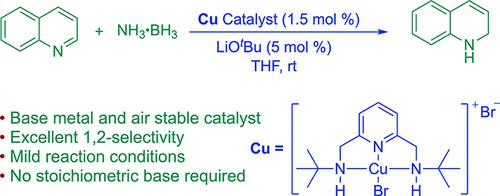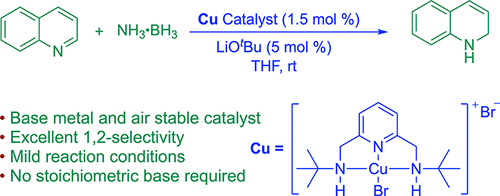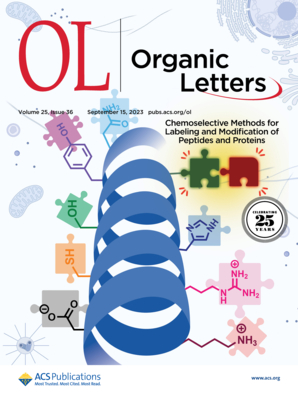铜催化喹啉选择性1,2还原。
IF 5
1区 化学
Q1 CHEMISTRY, ORGANIC
引用次数: 0
摘要
选择性还原杂芳烃化合物到部分氢化,脱芳分子是一个诱人的任务。开发了一种定义明确、空气稳定、以吡啶为基础的Cu(II) NNN钳形配合物,它可以催化喹啉的选择性1,2还原。不稳定的1,2-氢化喹啉转化为相应的酰胺,并以较高的收率分离出来。机理研究证实了反应是通过分子种类进行的,并形成了一个意想不到的铜双金属中间体,通过金属-配体的配合促进了催化。本文章由计算机程序翻译,如有差异,请以英文原文为准。


Copper-Catalyzed Selective 1,2-Reduction of Quinolines
Selective reduction of heteroaromatic compounds to partially hydrogenated, dearomatized molecules is a tantalizing task. A well-defined, air stable, and pyridine-based Cu(II) NNN pincer complex is developed, which catalyzes selective 1,2-reduction of quinolines. The unstable 1,2-hydrogenated quinolines are transformed into the corresponding amides and isolated in good yields. Mechanistic studies confirmed that the reaction proceeds via molecular species and the formation of an unexpected copper bimetallic intermediate, which facilitates the catalysis through metal–ligand cooperation.
求助全文
通过发布文献求助,成功后即可免费获取论文全文。
去求助
来源期刊

Organic Letters
化学-有机化学
CiteScore
9.30
自引率
11.50%
发文量
1607
审稿时长
1.5 months
期刊介绍:
Organic Letters invites original reports of fundamental research in all branches of the theory and practice of organic, physical organic, organometallic,medicinal, and bioorganic chemistry. Organic Letters provides rapid disclosure of the key elements of significant studies that are of interest to a large portion of the organic community. In selecting manuscripts for publication, the Editors place emphasis on the originality, quality and wide interest of the work. Authors should provide enough background information to place the new disclosure in context and to justify the rapid publication format. Back-to-back Letters will be considered. Full details should be reserved for an Article, which should appear in due course.
 求助内容:
求助内容: 应助结果提醒方式:
应助结果提醒方式:


